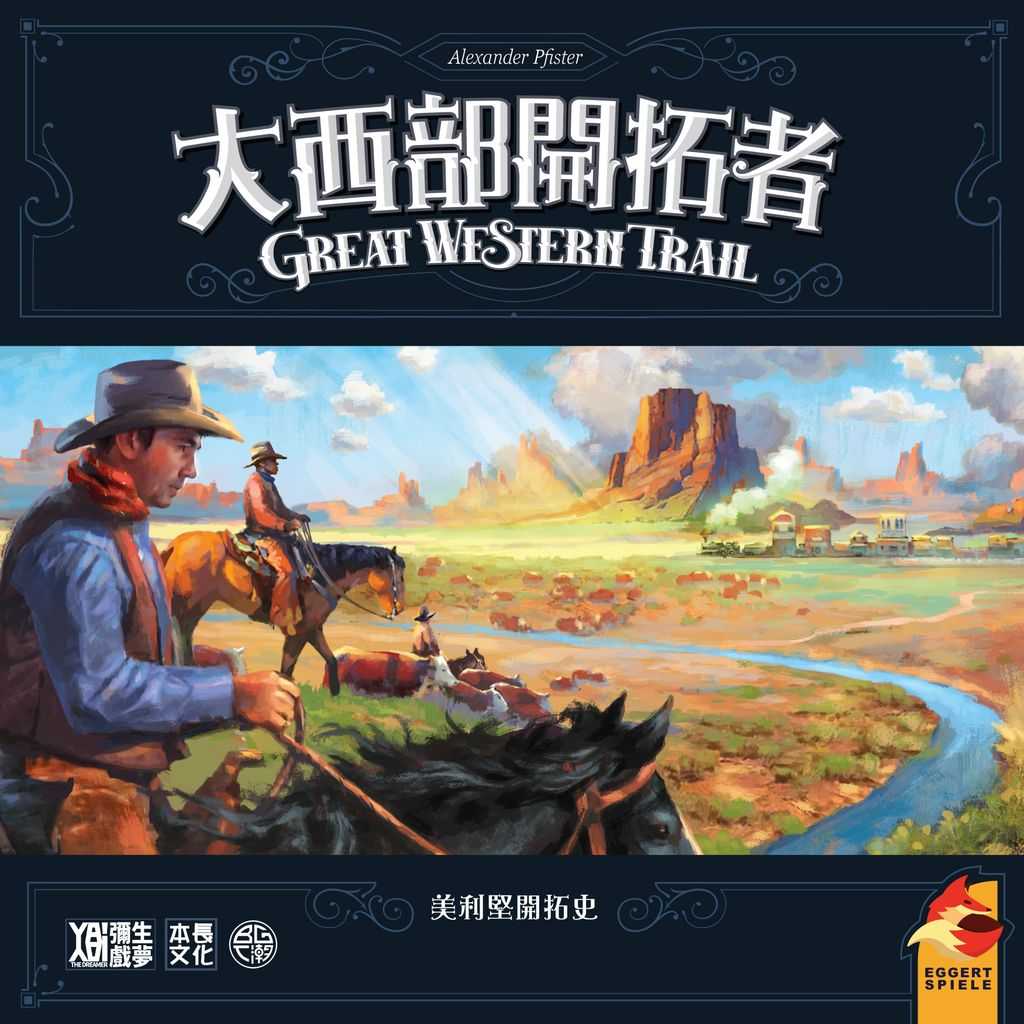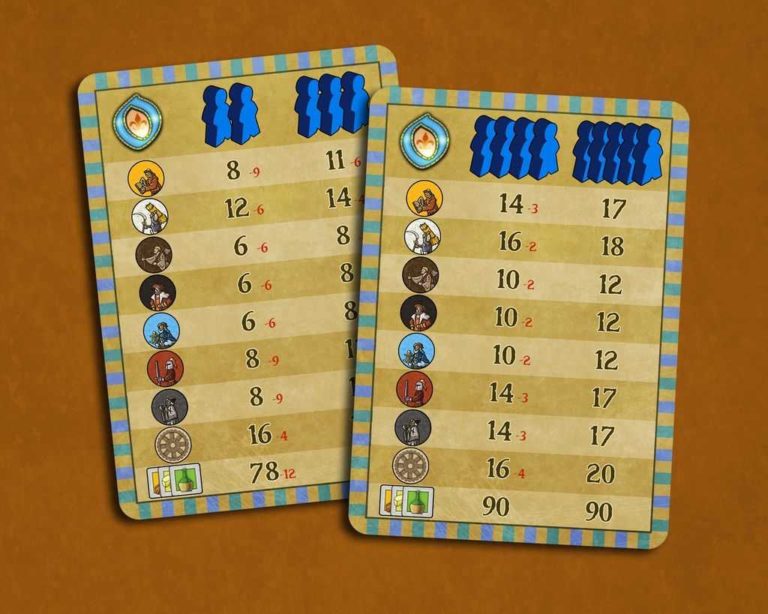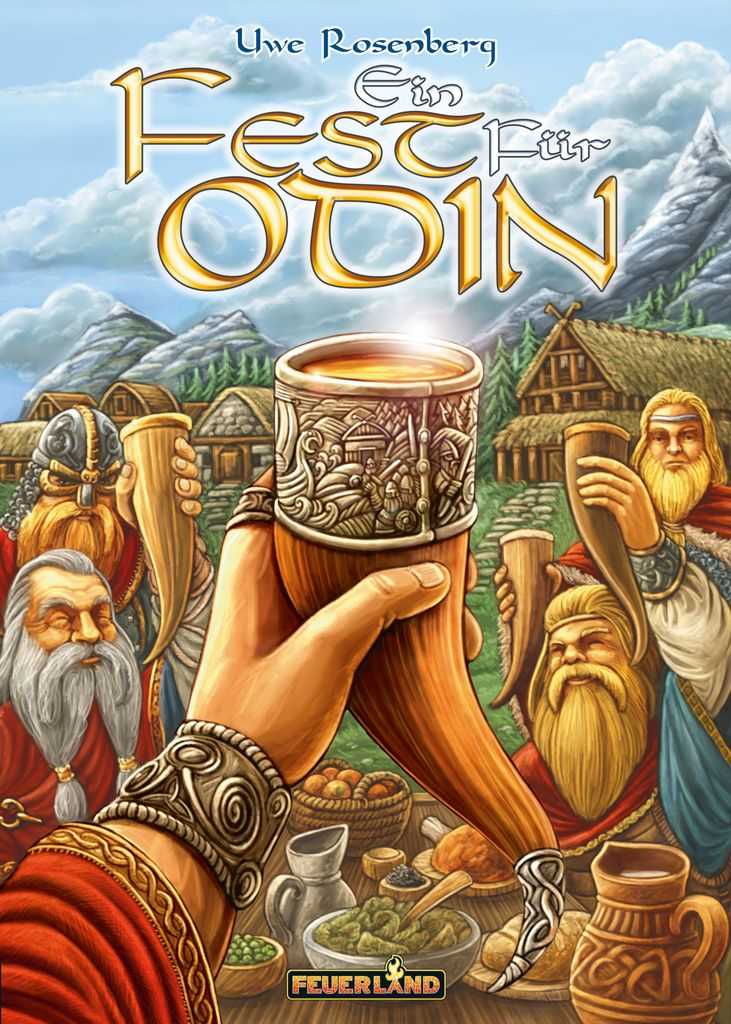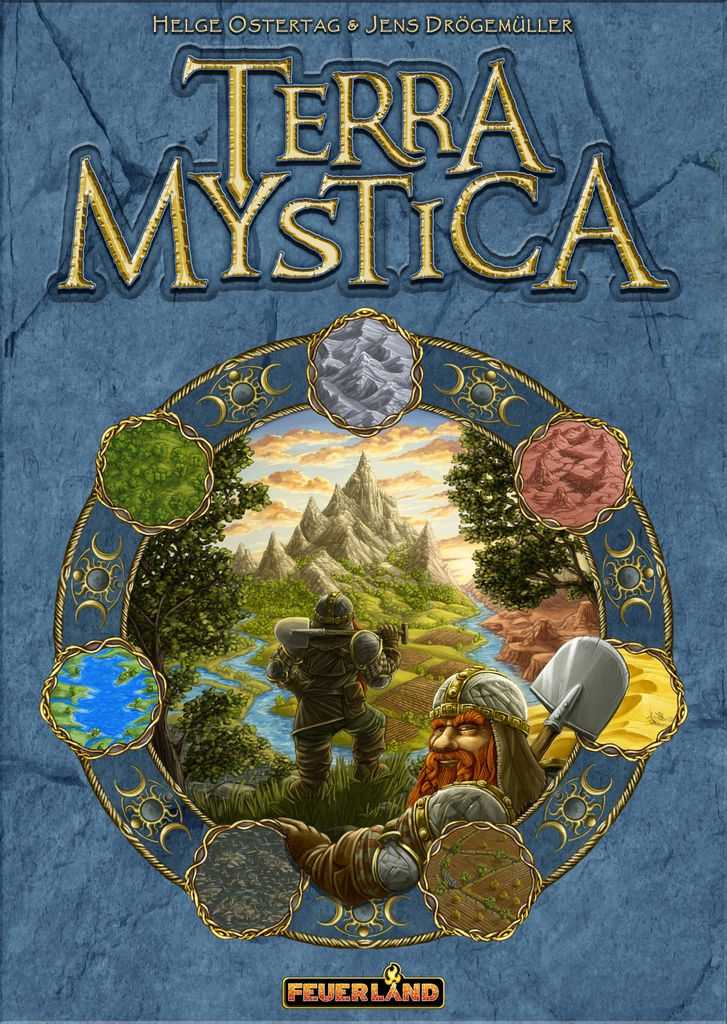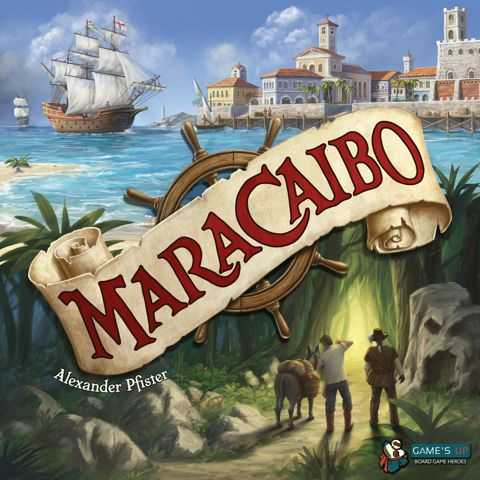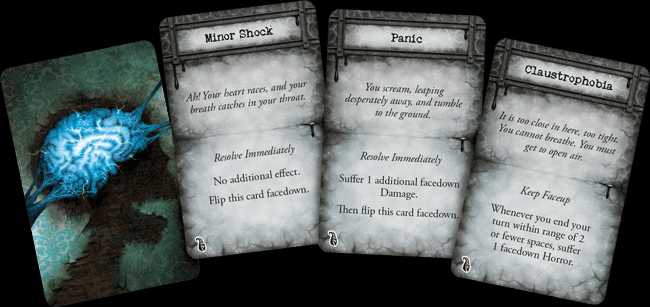Refreshing Review Of Great Western Trail: Second Edition
Refreshing Review Of Great Western Trail: Second Edition
Hello friend! Grab your cowboy hat and your favorite pair of boots; we’re heading back to the good ol’ days of cattle drives and expansive American frontiers. The board game that’s had us wrangling cows and building ranches since its debut has sauntered back into town with a new edition. I’m talking about Great Western Trail: Second Edition. I’ve spent countless hours on this trail, discovering new strategies, delighting in the artwork, and just basking in the enjoyment this game provides. It’s a journey filled with careful planning, intense competition, and the rewarding satisfaction of a well-executed game plan.
Key Points:
- Great Western Trail: Second Edition offers refreshing upgrades and familiar terrain for fans of the original game.
- The game is a culturally rich and strategically complex journey of cattle ranching in the late 19th-century American West.
- The second edition enhances the visual and gameplay aspects, including improved components, artwork, and solo play mode.
- The game’s core mechanics, such as the rondel movement system and deck-building elements, have been refined to offer a balanced and competitive experience.
- The second edition provides a smooth learning curve for both newcomers and veterans, with improved rulebook clarity and accessibility.
- The solo mode in the second edition simulates an opponent, adding a competitive element and strategic depth to the solo gaming experience.
- The game’s replayability is bolstered by new features, updated card decks and buildings, and potential expansions, ensuring an enduring and engaging experience for players.
For those of you who’ve trekked through the original Great Western Trail, you’ll find familiar terrain with refreshing upgrades. To the newcomers, prepare for a complex strategy game that will test your ability to adapt and strategize in a dynamically changing environment. I’ve experienced the soaring highs of victory and the educational lows of defeat, each play further fueling my desire to improve and explore the game’s depth. And let’s not forget the unboxing – oh, the anticipation as each component reveals itself, promising new adventures on the horizon.
Great Western Trail: Second Edition is not just about what’s in the box, but how it brings people together. It has sparked conversations, forged friendships, and even taught me a thing or two about the nuances of game mechanics and player dynamics. Whether it’s around the family table or among hardcore game enthusiasts, each session is a story waiting to unfold, a memory in the making. Today, let’s saddle up as I share my Great Western Trail: Second Edition review, insights, and some stories from along the trail.
The Essence of Great Western Trail: Second Edition
At its heart, Great Western Trail: Second Edition remains the culturally rich and strategically complex journey we’ve come to admire. By taking the role of a rancher, you are tasked with moving your herd through hazards and opportunities alike to emerge victorious. With its blend of card drafting, tile placement, and a unique movement system, the game promises a rich thematic experience that rivals any other out there. I’ve lost myself in the intricacies of each decision, celebrating the sensation of pulling off a masterful move or smartly navigating past an opponent’s plot.
Overview of the Game’s Premise
Picture this: we’re all cattle ranchers in the late 19th-century American West, with the simple goal of herding our cows from Texas to Kansas City, earning money and points along the way. Simple in theory, but as you’ll quickly discover, the devil is in the details. The trail is littered with opportunities to build, hazards to overcome, and detours that may lead to prosperity or ruin. In Great Western Trail: Second Edition, every decision feels weighty and significant; yet as complex as it is, the theme pulls you in, and before you know it, you’re fully immersed in the cattle rancher life.
It’s this blend of strategy and theme that pivots the game from good to stellar. The cattle market, the train routes – everything sings with authentic flavor. I remember the first time I laid eyes on the board sparkling with possibility, and it was love at first sight. You build your deck of cattle cards wisely, optimizing your hand for the best delivery possible, and along the way, you improve your personal ranch by constructing buildings, hiring staff, and expanding your rail network. The harmony between these elements weaves a compelling narrative each time you play.
But what truly sets it apart is how your actions resonate beyond your turn. Blocking a path, constructing a building, or moving along the train track doesn’t just affect your game; it changes the landscape for all players. This interwoven gameplay ensures that, from start to finish, you’re engaged with not just your strategy, but also reacting to – and sometimes foiling – the plans of your fellow ranchers. I vividly recall evenings where a single move sparked a cascade of groans or cheers around the table – a testament to the game’s engaging nature.
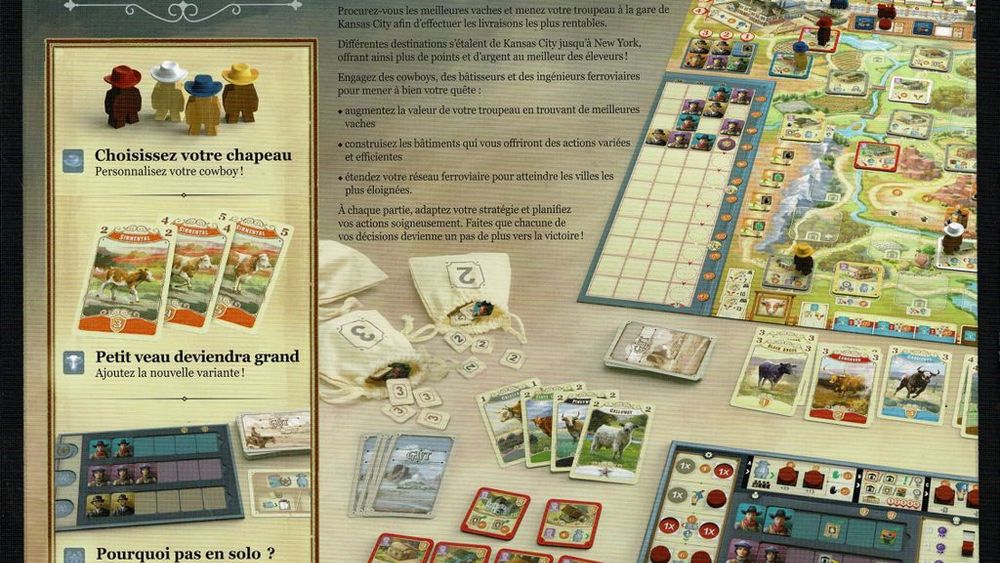
In Great Western Trail: Second Edition, the blend of strategy and theme creates an immersive experience where every decision feels weighty and significant.
What Sets the Second Edition Apart
What’s truly fascinating about the Great Western Trail: Second Edition is how it enhances an already fantastic game without losing the soul of the original. It takes what worked, what we loved, and amplifiers it; and even the smallest adjustments have a notable impact. Firstly, the visual overhaul is immediately striking. With clearer iconography and more inclusive artwork, the game feels more inviting and engaging right from the setup.
And then there are the gameplay tweaks. They’n subtle, but oh-so-significant. Starting with an improved player board layout that streamlines decision-making, to re-balanced actions that ensure a tighter, more competitive game – every change feels thoughtful. It captures that same thrilling journey down the trail, but with a smoother ride. Let’s not forget the addition of a solo play mode; now you can wrangle cattle even when the gang’s not around. From the inclusion of mini-expansions to the refined rulebook, it’s clear the designers listened to the players’ feedback. An evening spent on this new trail feels fresher, richer, and more rewarding.
Dive into the Gameplay
Now, let’s mosey on down to the crux of the matter – the gameplay. If I could compare the game to a dance, it would be a well-choreographed tango of strategic moves and countermoves. This intricate ballet of choices and strategies moves it beyond a mere game into an engaging mental exercise, one where each step is deliberate, and each turn presents a multitude of potential paths.
Core Mechanics and Gameplay Changes
The backbone of Great Western Trail’s gameplay is its clever use of the rondel movement system. You can’t help but marvel at its elegance – this looped path of choices guiding your every move like the steady hands of a skilled rancher. In the second edition, this system hasn’t lost a single stride. If anything, it’s been finessed further with little tweaks here and there that create a more balanced, competitive scramble to Kansas City.
Changes in deck building elements also encourage varied strategies. Now you can’t just hoard the same high-point cattle; you’ve got to diversify to reap the rewards. This shift alone reinvigorates gameplay, compelling players to revisit and refine their tactics. These modifications demonstrate a considered evolution of the game mechanics, polishing an already shining gem into something even more precious.
Strategies for Trailblazing Success
A winning strategy in Great Western Trail: Second Edition calls for a blend of foresight and flexibility. Remember, every game is a new frontier with its own set of challenges. What worked last time might not bring you glory this time around. As such, it’s crucial to keep a keen eye on your opponents’ moves as you formulate your strategy. One strategy often discussed among aficionados is focusing on building upgrades – a tactic I’ve watched lead to some epic turnabouts.
On the other hand, optimizing your cattle deck and leveraging your staff cards can’t be underestimated. It’s a delicate balancing act between accumulating points on the board and in your hand. I’ve experienced both the joy of a perfectly curated deck and the despair of a poorly planned route. One key to success is adapting your strategy in real-time to the ever-evolving conditions of the trail and the actions of your fellow cattle ranchers.
Adapting your strategy in real-time to the ever-evolving conditions and your opponents’ moves is crucial for success in Great Western Trail: Second Edition.
Component Quality and Aesthetics
When it comes to the tangible aspects of board games, the components and aesthetics play a huge role in the overall enjoyment of the game. For Great Western Trail: Second Edition, the sheer tactile pleasure of the upgraded components adds another layer of satisfaction to the gameplay experience.
Comparing Components: First Edition vs. Second Edition
To the trained eye, the differences in component quality between the first and the second edition of Great Western Trail are like day and night. Improved materials offer a tangible sense of sophistication and durability. The replacement of the somewhat-fiddly cardboard coins with metal coins in some editions is a prime example; they clink satisfyingly on the table, evoking the era’s ruggedness with every transaction.
Moreover, the player boards and the game board have received a noticeable upgrade in sturdiness and finish, making them more resilient to the frequent setup and teardown that’s typical of games that hit the table regularly. And as much as the old buildings had a certain charm, the new structures in the second edition resonate with the updated aesthetic, contributing to a more cohesive and immersive gameplay environment.
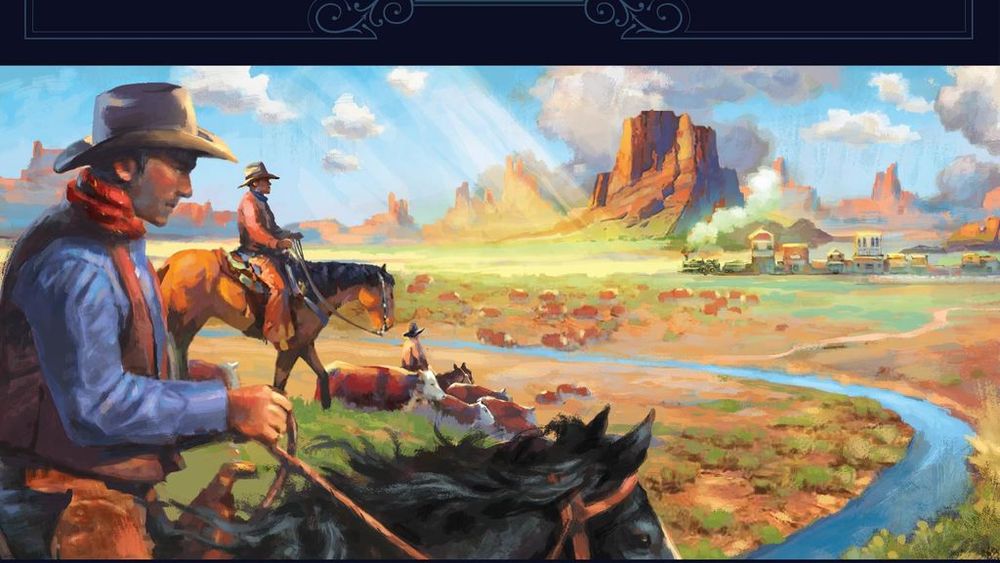
The Visual and Tactile Experience
There’s something magical about the moment you unfold a game board for the first time, and with Great Western Trail: Second Edition, this experience is no less delightful. The refreshed artwork is not only pleasing to the eye but also makes playing the game more intuitive. Iconography is clearer, which streamlines the learning experience and makes for a smoother gameplay flow.
Running your fingers over the quality of the punch-out tokens and the heft of the new cattle meeples gives you a sense of solidity that the first edition didn’t quite achieve. It’s these little touches, the careful consideration given to the tactile elements, that makes handling the pieces during gameplay truly gratifying. And let’s not skip past the player insert; while aesthetically aligned with the theme’s elegance, it did miss the mark in terms of practicality – a sentiment echoed by many of my gaming group. It’s one of the few areas where functionality took a backseat to form in this edition.
The upgraded artwork and improved tactile elements in the Great Western Trail: Second Edition enhance the gaming experience and make gameplay more intuitive and gratifying.
Rulebook and Learning Curve
Diving into a new board game can sometimes feel daunting, but Great Western Trail: Second Edition ensures that your journey from greenhorn to trailblazer is as smooth as can be.
Clarity and Accessibility of the Rules
The rulebook is the compass by which we navigate our games, and I’m pleased to report that the rulebook for Great Western Trail: Second Edition is a substantial improvement. Its clarity and organization make understanding the game’s nuances less of an uphill battle, paving the way for a more accessible onboarding experience. The illustrations and examples are particularly helpful, illuminating complex mechanisms in a way that’s easy to digest.
An often overlooked yet critical component, the index, has been carefully crafted to help find specific rules swiftly – a godsend during heated debates over gameplay nuances. It’s this meticulous attention to the learning tools that invites players of all experience levels to join in on the fun without the accompanying anxiety of tackling a heavyweight game.
The Learning Experience for Newcomers and Veterans
I’ll be the first to admit, Great Western Trail: Second Edition isn’t a walk in the park when it comes to complexity. For newcomers, there’s a mountain of symbols and strategic layers to navigate. But fear not! The game’s structure is such that it teaches you to climb that mountain one step at a time. And as for veterans, even with the familiarity of the original, there’s a fresh learning curve that rekindles the excitement all over again.
The joy lies in mastering the interplay of deck building, strategic movement, and efficient use of buildings and staff. My friends and I have often dove deep into post-game analysis, each walkthrough revealing new paths we hadn’t considered before. It’s this deep reflectiveness the game promotes that truly elevates the learning experience, making it as rewarding as it is educational. After all, how often do we get to learn as much about ourselves as we do the game we’re playing?
The Solo Experience
Ah, the solitary journey along the Great Western Trail – it’s like an introspective odyssey for board gamers who crave a challenge against none other than themselves. As someone who frequently savors the quiet intensity of solo gaming, I’ve hankered to pit my wits against this Second Edition’s solo mode. Board games often offer a social buffet, but I’ve found a unique satisfaction in navigating the cattle trails alone, and Great Western Trail: Second Edition has cultivated an even richer, more refined solo experience. So, let’s corral those cattle and dive into what this edition brings to the solo table.
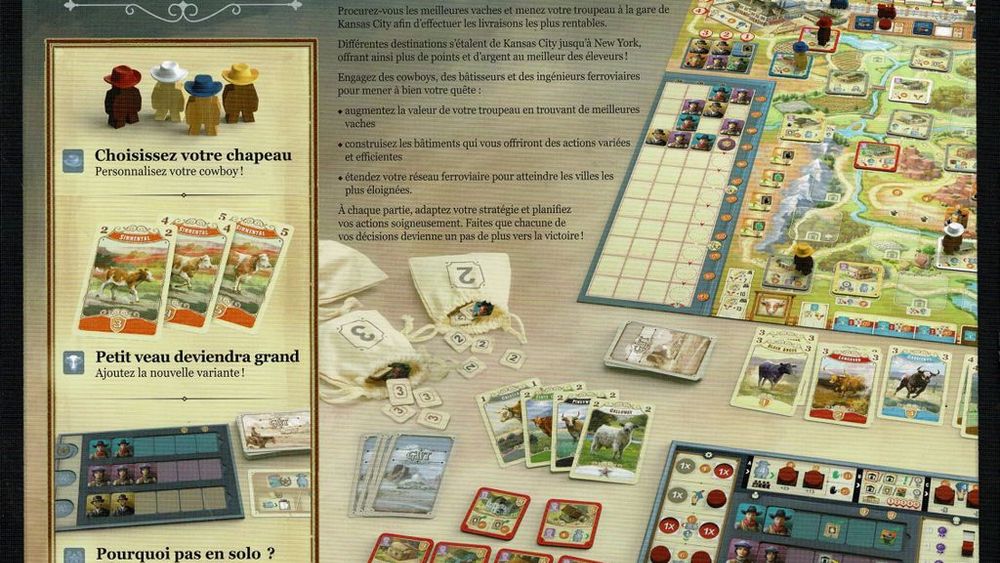
How the Second Edition Enhances Solo Play
The Second Edition of Great Western Trail isn’t just a feast for the multiplayer crowd. Solo play has been lassoed in with a finesse that caught my attention. You’ll find an automa that simulates an opponent, breathing life into the dusty trails even when you’re the lone cowboy. The automa operates with a deck that drives its actions, and what a delightful puzzle it is! It’s like a duel where your opponent is predictably unpredictable, keeping you on your boots and spurs. The gameplay is smooth and very strategic – so many details and a lot to think about.
The new solo variant doesn’t skimp on tension either; there’s a heightened competition for buildings and hazards, which I find ramps up the mental grind. Decisions are more critical; every choice is like a fork in the road leading to prosperity or ruin. It’s an excellent challenge to find the best choices. The simulated player dynamics remind me of the banter and rivalry on game nights, filling the room with a presence even when it’s just me, my cattle, and the open trail.
There’s also a point-scoring system that not only pits you against the automa but also your past performances. It’s an addictive endeavour, coaxing out one’s competitive spirit against an invisible foe and your own high scores. This has given Great Western Trail: Second Edition a solo mode that truly rivals the company of fellow players, offering a robust and engaging experience when solitude calls.
The new solo variant of Great Western Trail: Second Edition offers a strategic and engaging experience, simulating opponent dynamics and challenging decision-making to rival multiplayer gameplay.
Comparing Solo Mode to Multiplayer
Solo mode in Great Western Trail: Second Edition creates an intimate rapport with the game’s mechanics, similar to enjoying a good book by the fireside. Playing solo, you’re afforded the luxury of time to contemplate strategies, explore subtle nuances of the game, and truly sink into the theme without external pressures. It’s a meditative affair where decisions can simmer and be savored.
Yet, there’s a stark contrast when I gather friends for a multiplayer scramble. The social dynamics add layers of unpredictability and camaraderie that solo play can’t replicate. The game may feel surgical as I’ve experienced how one can runaway with the game if their strategy goes uncontested. However, the rich tableau of player interactions – from alliances to subtle sabotage – imparts an energy that resonates differently than a solo sojourn.
In multiplayer, Great Western Trail is like a lively frontier town, bustling and vibrant, where every player’s actions ripple through the game’s ecosystem. But in solo mode, it becomes an uncharted expanse waiting for a single trailblazer. Each mode offers its own brand of satisfaction, whether it’s the pride of personal achievement or the joy of shared escapades on the trail.
The Impact of the Second Edition on Replayability
When a game can keep calling me back to the table, it’s a sign of a well-forged piece of entertainment. Let me tell you, the Second Edition of Great Western Trail doesn’t just call – it yells. With thoughtful enhancements and additions, the replayability factor of this edition has bucked up to impressive levels, ensuring its spot in my regular rotation for the foreseeable horizon. Whether I’m saddling up solo or wrangling a posse for the trail, the allure of returning remains as strong as the allure of the western frontier itself.
New Features and Their Replay Value
The Second Edition comes locked and loaded with new features that inject a hefty dose of replay value. Brand new buildings bring fresh tactical decisions, like a poker player with new tricks up their sleeve. Similarly, the dual-sided player boards offer varied setups, ensuring no two games are the same. The unpredictable setup keeps me strategizing anew each time; it’s like trying to tame different wild horses – each one requiring a unique approach.
The updated card deck is another area where the Second Edition shines, renovating the deck-building aspect to ensure it now plays a more pivotal role. The card market’s revised layout adds strategic complexity; it’s comparable to plotting routes on an old map, with new paths that keep the treasure hunt alive. I adore a well-crafted deck-builder, and the refined balance between different strategies ensures Great Western Trail: Second Edition stays evergreen.
And let’s not skirt around the bush – the addition of a solo mode in itself is a game-changer, unleashing a whole new realm of replayability. Facing the automa’s evolving challenges is akin to playing chess with a ghost – there’s always something new to learn, a different move to counter. This mode ensures that, even when my gaming group can’t saddle up, the game maintains a magnetic pull.
Longevity of the Game with Expansions
The true test of a game’s endurance in a collection is how well it ages – like a fine bourbon in a cowboy’s flask. And in this case, Great Western Trail: Second Edition seems poised for a lengthy trail ride, especially with the room for expansions. The expansion potential keeps me, and many fellow gamers, on the lookout for new experiences to add to the core game.
The anticipated extensions raise excitement akin to the prospect of unexplored territories. I think back to one of the past versions and how the “Rails to the North” expansion elevated the game to new heights. It ratcheted up the strategic depth and offered more replayability. We haven’t seen an integrated expansion like this for the Second Edition yet, but the foundation is solid and the community is waiting with bated breath for more content that will enrich an already splendid game.

Moreover, the Second Edition seems to leave a window open for integrating new mechanics or themes, lest we forget the possible fusion of the original expansions. Each potential addition is like a promised patch of new grazing land, holding the promise of growing our cowboy empire even further. The baseline strength of the game indicates a design ripe for expansion, capable of keeping the gameplay fresh and engaging for a long time to come.
Great Western Trail: Second Edition has strong potential for expansions, promising to keep the gameplay fresh and engaging for a long time to come.
FAQs
What are the key differences between the first and second editions of Great Western Trail?
The key differences between the first and second editions of Great Western Trail reside mainly in the updated graphics, artwork, and player board design, along with the addition of a new solo mode and a few minor balance tweaks to enhance gameplay.
How does the second edition improve the solo gaming experience?
The second edition improves the solo gaming experience by introducing an automa system that simulates another player, adding a competitive element and strategic depth not present in the first edition.
Are there any new strategies to consider in the second edition?
In the second edition, players need to consider new strategies due to the inclusion of updated card decks and buildings, which alter the dynamic of the game and provide a richer variety of tactical options.
Can components from the first edition be used with the second edition?
Components from the first edition of Great Western Trail can be integrated with the second edition to an extent, although differences in art and card design may reduce the aesthetic cohesion of the combined components.
Conclusion
After hitting the trail with Great Western Trail: Second Edition, my boots are dusty but my spirits are high. The Second Edition brought more than just a brush of new paint; it launched the trailblazing experience to a new zenith, adding depth, polish, and solo grandeur. This Great Western Trail: Second Edition review serves as my trail diary, an account of an adventure through uncharted territories, revisited again and again with an enduring sense of wonder.
The authentic cowboy spirit lives on in this game, its replayability enriched with every playthrough. From 1-4 players, whether it’s your first cattle drive or you’re a seasoned rancher, there’s always a new path to carve out, a fresh strategy to employ. I reckon this game has earned its spurs and a permanent hitching post on my game shelf.
Until we meet again on another board game journey, may your trails be scenic and your cattle herd prosperous. Happy gaming, partner, and I’ll be seeing you down the trail.
Signing off with a warm tip of my hat, Lucas
More Boardgame Reviews:
This article uses material from BoardGameGeek and is licensed under the Creative Commons Attribution-Share Alike License.

